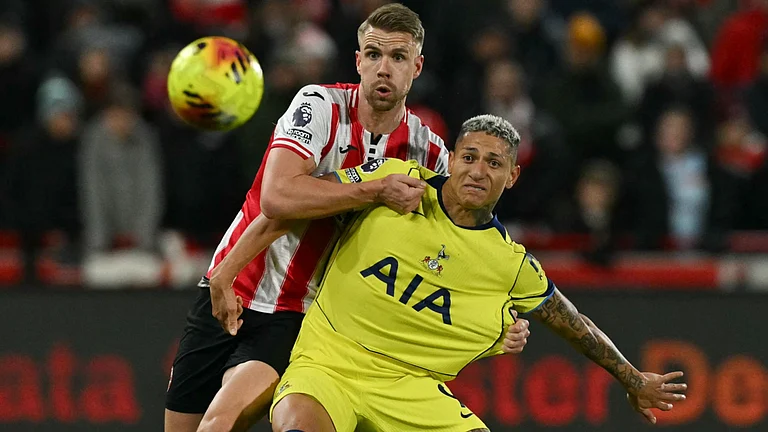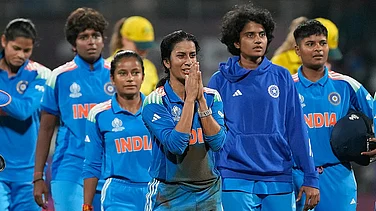Of the five states where Assembly Elections are being held in November-December, Chhattisgarh is the only state where votes will be cast in two phases. Elections will be conducted for 20 seats on November 7 and for the remaining 70 seats on November 17. On December 3, counting of votes will be done in all five states. Votes are being cast in two phases due to the presence of Naxalites in the region.
The state of Chhattisgarh has been divided into five divisions. Bastar and Sarguja are the two tribal belts of the state. These two regions have 26 seats and all these seats are with the Congress party currently. It is noteworthy that out of the 29 reserved tribal seats of the state, 24 belong to this region. Tribals form the second largest population constituting 32 percent, after the majority population of OBCs in the state. This region is of great importance to both the Congress, which is in power, and the opposition BJP. It is said that this region is the key to political power in Chhattisgarh. The other three plain divisions of Raipur, Bilaspur and Durg are important on account of the presence of 42 percent of OBC population. The main battle for power has been primarily between the Congress and the BJP. However, this time, the presence of the Aam Aadmi Party along with many small and regional parties could spoil the political equation for the Congress and the BJP.
Past Results
After the constitution of Chhattisgarh in 2000, the Legislative Assembly election of the state is being conducted for the fifth time this year. At the time of the formation of the state, Congress was in power with 62 seats. Elections were conducted for the first time in 2003. BJP won in 50 seats and formed its government. Congress could only win in 37 seats, its tally down from the earlier 62. BJP was in power for 15 continuous years. In 2008, BJP registered its win on 50 seats, while Congress managed to bag only 38 seats. In 2013, the BJP won 49 seats and Congress 39. If vote percentage of 2003, 2008 and 2013 election is looked at, it can be found that the difference in vote share between the two parties was just 2 to 3 percent. In 2018 elections, Congress won 69 seats out of 90, while BJP could only win 14 seats. In 2018, the vote percentage of Congress as 43.9 percent while that of BJP as 33.6 percent. It is worth noting that in this election, vote share of Congress increased by only three percent. However, there was a decline in vote share of BJP by 10 percent. Anti-incumbency and rebel leaders contesting as independents were considered to be the major reasons for the decline in BJP's vote percentage.
This time, more than two crore voters of the state will cast their vote in the two-phase elections. There are 18 lakh voters who will exercise their voting rights for the first time this year. In the first phase of voting on November 7, out of 20 seats that will go to election, 19 are currently held by the Congress party. In this region, the BJP has only one seat from where erstwhile Chief Minister Raman Singh had won. The 20 seats going to polls in the first phase include all 12 seats in the Bastar region, which is considered to be Naxal-affected, as well as eight seats of the Durg region that include constituencies like Rajnandgaon, Kabir Dham and Manpur. Congress has control of 50 seats out of 70, for which voting will be conducted on November 17 in the second phase.
Senior journalist Alok Prakash Putul, who has been covering state Assembly elections for the past two decades, says the BJP, which was not very active for the last five years, might use the conversion and Hindutva issues in the election to bring about change. While talking to Outlook, he said, “If we consider Chhattisgarh governance, overall the Congress appears to be strong. However, when we look at the situation from the perspective of seats, there are some candidates from Congress who are likely to lose this election. But, even the BJP, which has been sluggish for five years, does not seem to be coming back. It is thus very difficult to predict the situation during these elections. Yes, the way BJP is trying to bring tribal conversion and Hindutva issues to the centre stage, is likely to make a difference. The next 15 days will set the narrative and the picture will become clearer with regard to both the BJP and the Congress.”
Putul adds that the way ED and I-T Department have surrounded the government and arrests have been made, these factors will also decide the course of elections.
Challenges for Congress and BJP
Both BJP and Congress have released their list of candidates. Both parties are up against several election-related challenges. Political commentator Harsh Dubey says that while the main electoral fight is between the Congress and the BJP, but both parties are struggling with internal conflicts.
Harsh says, “Congress has been doing well at the governance level. But the biggest challenge for the party is to overcome the anti-incumbency of the MLAs. For this reason, at present, the Congress has denied tickets to 22 of its 71 sitting MLAs. There is a big problem of second leadership in the BJP. In the list of candidates released this time, the BJP has again given tickets to many former ministers and leaders, who are said to have played a major role in the party’s defeat in 2018. This is the reason why the party is facing the ire of the workers both within and outside. However, the BJP has also tried to fight back. This time around, it will not be a cakewalk situation for the Congress party.”
Like in Madhya Pradesh and Rajasthan, BJP has given tickets to Union Minister of State Renuka Singh, three MPs and two former IAS officers. The big names from the state include former CM Raman Singh, Brijmohan Agrawal and Dharamlal Kaushik.
Though both these parties have been in support of the 33 percent Women Reservation Bill, they do not seem to be in the mood to voluntarily implement the same in the state. BJP has increased the share of tickets to women to just 15 from 14 while Congress has given tickets to only 18 women candidates.
According to a report, around 117 star campaigners will address election meetings and rallies. BJP and Congress have each released the list of 40 star campaigners while Aam Aadmi Party has come out with 37 names. Prime Minister Narendra Modi, Home Minister Amit Shah, national party president JP Nadda, Chief Minister of UP Yogi Adityanath are the main names on BJP’s star campaigners list whereas Rahul Gandhi , Priyanka Gandhi, Mallikarjun Kharge will try and woo the electorate from the Congress. AAP’s list includes names like Delhi CM Arvind Kejriwal, Punjab CM Bhagwant Mann, Raghav Chadha and Harbhajan Singh.
Where Other Parties Stand
Apart from the BJP and the Congress, there are many small parties that can change the political equation of the two major parties. The Aam Aadmi Party is contesting the elections in Chhattisgarh separately from the INDIA alliance. Delhi CM Arvind Kejriwal and Punjab CM Bhagwant Mann have conducted two meetings each and have also been part of several other big meetings. Parties like the BSP, Ajit Jogi's party, Janata Congress Chhattisgarh, Chhattisgarhia Kranti Sena are also in the electoral fray. Apart from this, former Union Minister in the Indira Gandhi government, MP, MLA and Chhattisgarh's big tribal leader Arvind Netam's Hamar Raj Party has given tickets to 50 candidates, including from tribal reserved areas. He is also providing support to CPI on several seats.
Alok Prakash Putul says about these parties: “Last time in the state Assembly election, BSP and Janata Congress Chhattisgarh had contested election in alliance and had won 7 seats. They received 12 percent vote share. The remaining independent candidates secured 7 percent vote share. If Congress and BJP are excluded, then the remaining vote share is 19 percent. This time, the number of parties has increased, especially Arvind Netam's Hamar Raj Party has a strong influence among tribals. On the other hand, Aam Aadmi Party is also contesting election. This party can be considered to be a favourite of the rebel leaders of both BJP and Congress. At the same time, the votes that these parties will get will be the votes of the Congress and the BJP. I believe they can make more inroads into the Congress vote bank.”
(Translated by Kaveri Mishra)



























